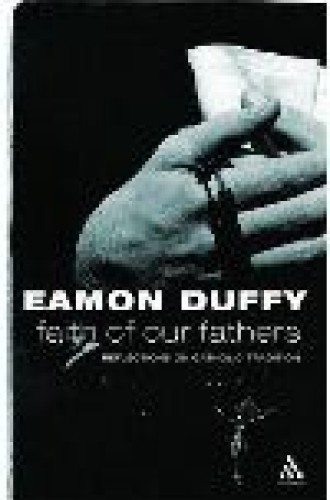Faith of Our Fathers
Eamon Duffy is one of our greatest historians. His most important book, The Stripping of the Altars: Traditional Religion in England, 1400–1580 (1992), challenged the stock claim that religious life before the Reformation was so lifeless that the slightest reforming spark would quickly become a roaring fire. With his exhaustive demonstration of the vibrancy of faith and practice in England on the Reformation’s eve, he undercut a common thesis among professional historians and derailed Protestants’ self-congratulatory appraisal of their beginnings.
When I was part of a graduate-seminar discussion of that book, we postmodernly savvy readers quickly noticed a problem: nowhere in the book does Duffy acknowledge that he is a practicing Catholic of a rather traditional bent. Whether this affects his historical case or not, it would have been helpful to hear him say that he has a personal stake in his argument.
Now he has done so, and with impressive lucidity. Faith of Our Fathers is a collection of mostly short pieces on the relationship between Catholic faith and history, many previously published where Protestant readers in the U.S. would have been unlikely to see them.
Not only is Duffy’s appraisal of key topics of Catholic piety and life fascinating—in each essay he shines the light of historic faith on an issue of concern to contemporary church practice—it is a joy to watch a historian at Cambridge write about his own faith in an engaging manner, even (or especially) as he defends doctrines and practices that are specifically Catholic. In this task Duffy follows in the great tradition of 20th-century English dons, historians-cum-theologians who have been willing to write for a broad ecclesial audience—a tradition that includes J. R. R. Tolkien and C. S. Lewis, Nicholas Lash and Herbert McCabe, and now Duffy and Cambridge theologians Denys Turner and Anna Williams. What is it about the English theological academy that produces extraordinary theologians who write like angels and are willing to work not only for academic achievement but to make people worship God?
Duffy’s own theological interests here are mostly in areas of actual church practice, especially liturgy, the papacy, the priesthood and teaching about the afterlife—for example, how views of purgatory and hell impinge on daily Catholic practice. He is not bashful about the weirdest aspects of his own faith and practice. He speaks often of Catholic veneration of relics and the bodies of the saints. Here we see both his humor and his theological and practical wisdom: he tells of someone seeking a relic of St. George and being offered one of the dragon as well, and he writes movingly of ancient Rome as a place where “the name of Christ still had an unfamiliar ring, and to which the gospel came first as treason, and then as an immense and liberating surprise.”
Duffy speaks lovingly of the Ireland of his youth in the 1950s, when he was so saturated in things Catholic he could scarcely escape them. This saturation is now fast eroding in Ireland as everywhere, and not all for the bad: many of Vatican II’s theological and liturgical reforms were needed, and for reasons Duffy celebrates. Yet he clearly worries about the loss of something dear from his remembered childhood. The old catechisms, rosaries, prayers, confessionals and memorizations may have contained some nonsense, but they also gave depth and order to life. Duffy knows these prayers still, as “ultimate reality named and tagged, the moral structure of the universe set out for use in the pages of a soft-backed schoolbook: sorted.”
Occasionally we catch a glimpse of a deep fear in Duffy, his worry about the future of the church. He laments the state of the mass in most parishes, where “teenagers and children . . . will take the Host . . . like a biscuit, and on returning to their places will slump in their seats or gaze about them as if they have just come back from the bathroom.” The terror that gripped some worshipers in the time of the pre–Vatican II rite may have needed ameliorating, but at least that rite had substance, and its church was in no danger of dying of sterility and boredom.
Yet Duffy is no mere traditionalist clamoring for a happier time. He makes this clear with one of the wisest reflections on the scandals in the Catholic Church that I have encountered. Part of the problem, he explains, is that the church has nourished an expectation that its priests be sinless, above the fray, innocent. Medieval Christians saw it differently. Prior to the Counter-Reformation, when future priests were removed from their homes and raised in seminaries to be “set apart” and perfect, the church was “profoundly Augustinian,” expecting its priests to sin like anyone else, and adjudging economic sins to be at least as severe as sexual ones.
With the church’s marginalization in modernity, Duffy suggests, the physical and spiritual setting apart of clergy has led to an authoritarian culture bent on protecting the church’s good name at all costs, even to the point of covering up and excusing the most egregious clerical sin. What we have now, he says, is a Donatist church stocked with reputedly perfect people, rather than an Augustinian one in which leaders are expected not only to sin, but also to repent openly and grow toward holiness.
This is the sort of history we need —history that serves an ambassadorial role between past and present, illumining our life with wisdom.






